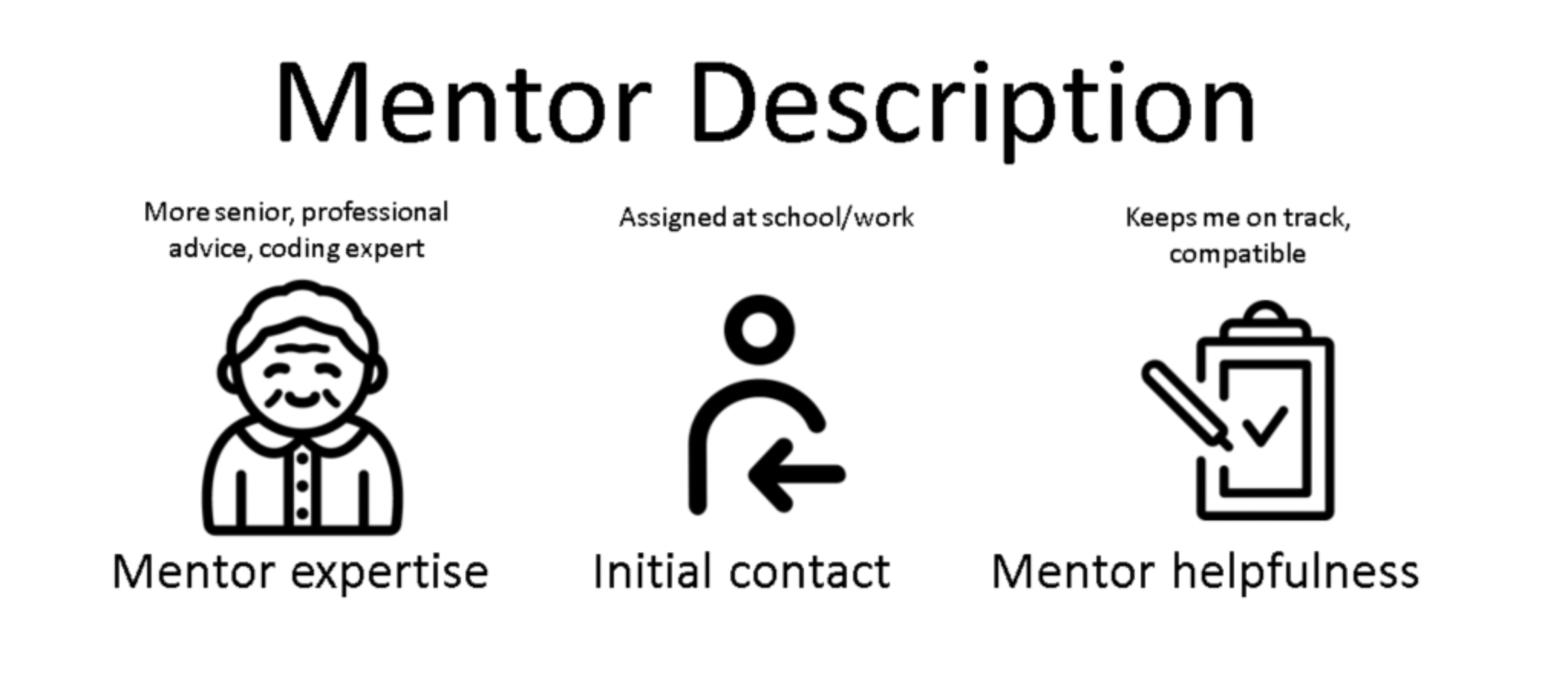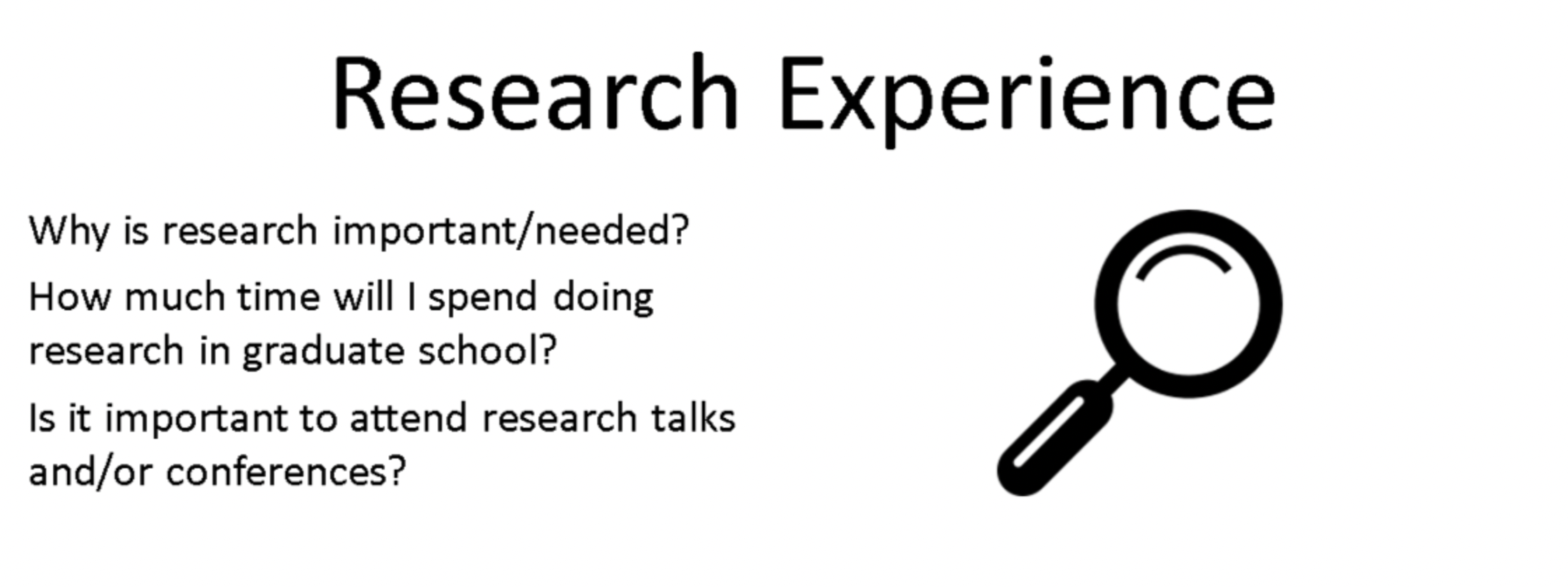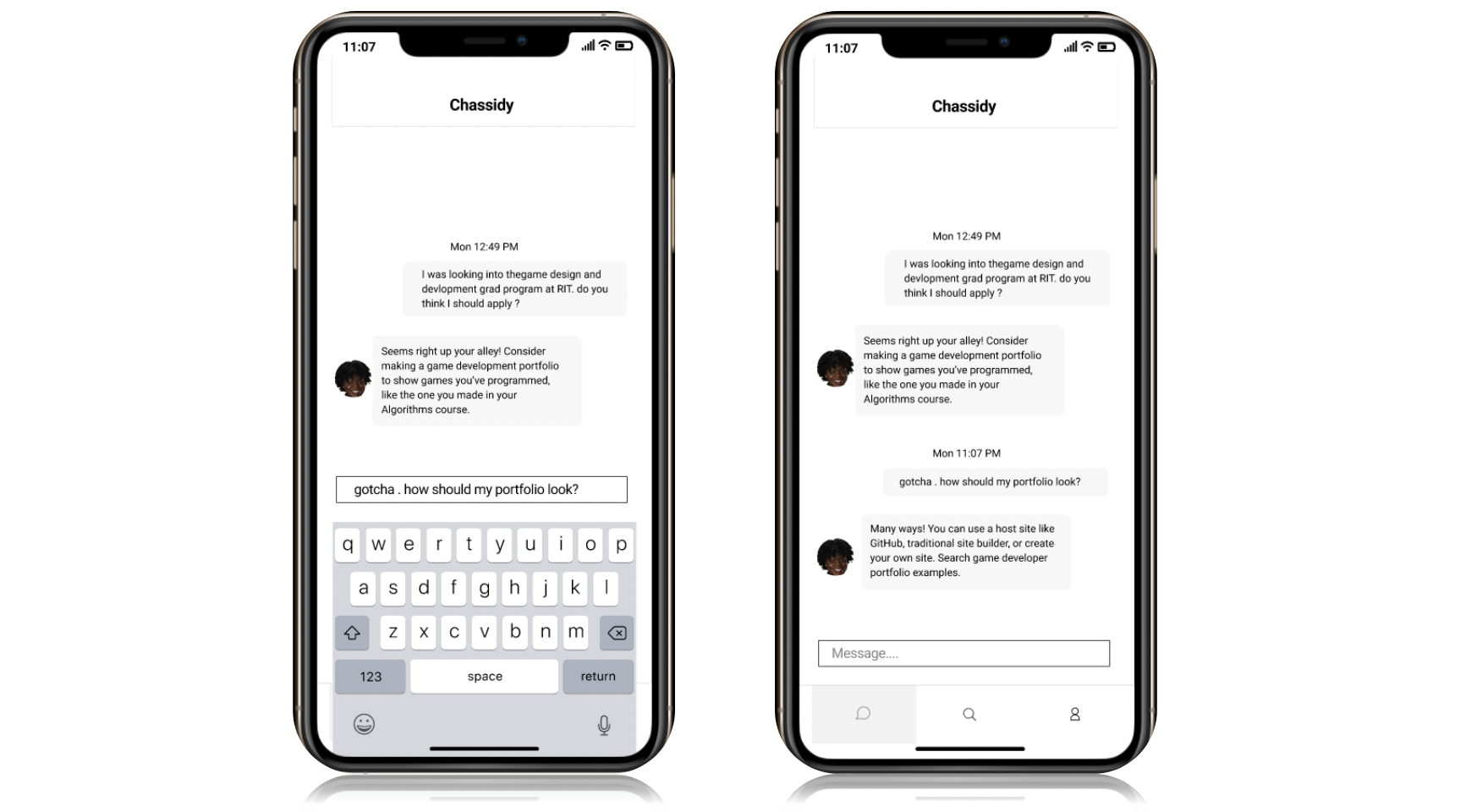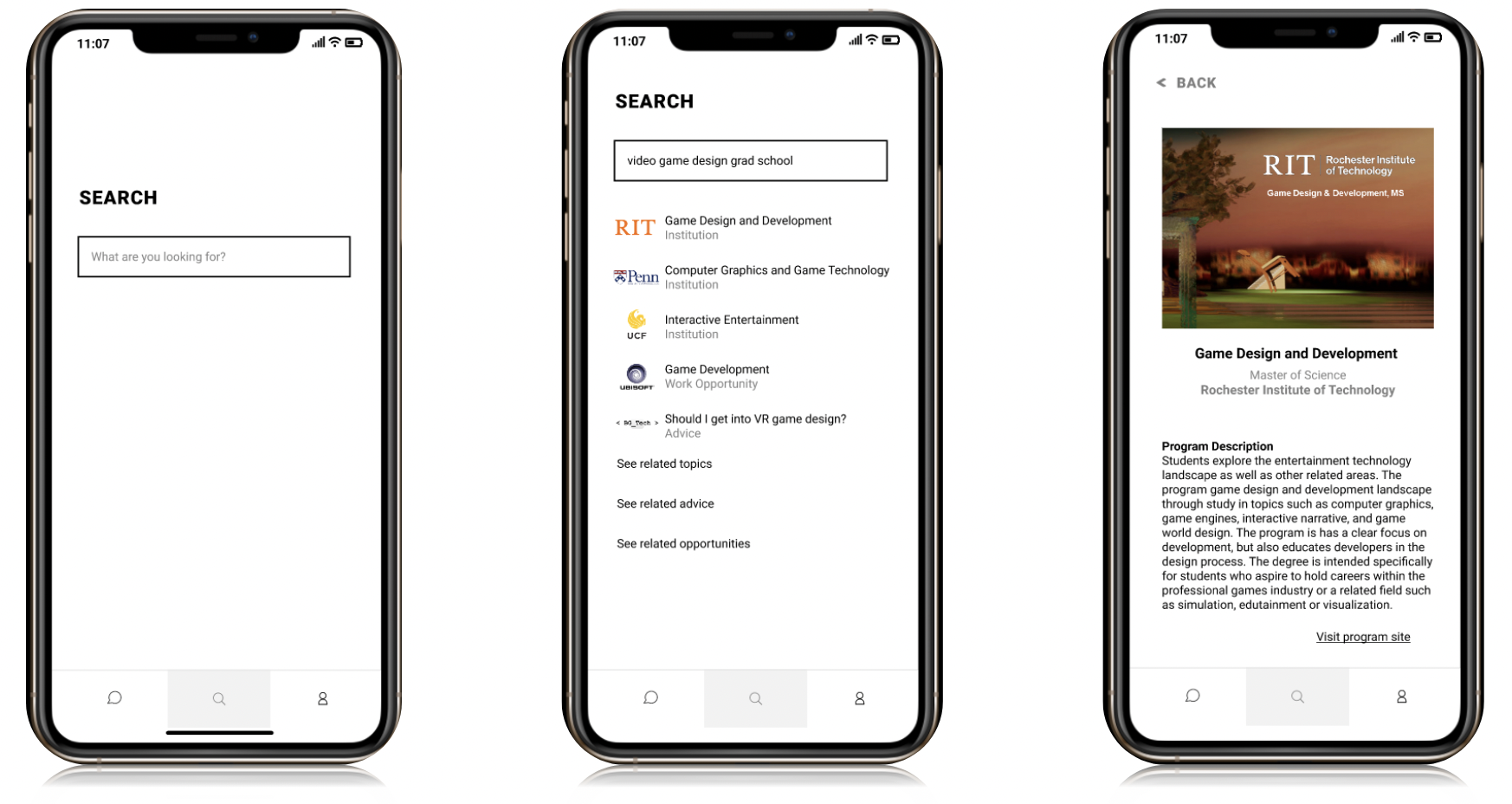BlackGap Tech Mentor
Let me check you in. (Overview)
Want me to send you some information?
Exploratory Research
Where this is coming from. (Background)
I found out there was a high demand for diversity in computing careers
% Black US population: 13%
% Black bachelor’s degree in…
CS: 3%
Computer engineering 5%
IT: 7%
% Black work at…
Silicon Valley: 3%
Technical positions: 3%
Tech company: 7%
%Black computing faculty…
Tenure: 2%
Non-tenure 3%
With more research I learned this is influenced by challenges with URM students’ computing identity
Performance (resilience & self-efficacy)
Willingness to participate (interest & belonging)
Near-peer mentoring can help mitigate
So my colleagues and I developed BlackGap Tech Mentor
Proposed intelligent virtual mentoring system (VMS) tailored to undergraduate underrepresented minority computing students
Explored needs and preferences, developed information database, and prototyped virtual mentoring system
So let’s talk. (Focus group)
I developed a focus group protocol informed by the Mentor Effectiveness Scale (Berk, 2005) and other base-level design fundamentals. Twenty Black computing undergrads and grad students ages 22-54yo were recruited.
I conducted and audio recorded one of three semi-structured 1 1/2 hour focus groups.
Guess what they said. (Focus group results)
I performed a qualitative inductive-deductive thematic analysis on the transcribed audio recording using the Mentor Effectiveness Scale as preselected codes.
They suggested uses for a virtual mentoring system.
Use when…
Uncomfortable asking people around you
In need for technical assistance
In need to grasp concepts better
In need for general information
It can be the inappropriate tool if
you’re looking for detailed information
Works best if it is:
Able to develop rapport and trust
Able to develop a personal relationship
Intelligent
User Research
I have to ask some questions. (Survey)
I developed a user survey incorporating…
User interest/likelihood of attending grad school
Factors that persuade a user to (or not to) pursue grad school and professoriate.
3 questions a user would ask a mentor in pursuing CS careers, grad school & professoriate
71 Black computing undergrads were recruited
94% black, 5% multiracial, 1% Native American
18-25yo
2.4-4.0 GPAs
I analyzed with descriptive statistics
Levels of interests in grad school
Likelihood to pursue grad school
I performed a qualitative inductive-deductive thematic analysis on the open-ended survey data for factors that persuade users to attend grad school. I synthesized. computing grad school program FAQ topics to use as preselected codes. Mentor questions were used for information database and to explore question syntax.
Let me tell you, they were… (Survey results)
Prototype Testing
Building the relationship. (Testing the VMS)
Colleagues developed a virtual mentoring system (VMS).
VMS was built by computing colleagues using natural language understanding engine (Google Dialgueflow. Avatar (for embodied conversational agent) programmed by colleague using SitePal and JavaScript. NLU also connected to SMS (via Twilio) and Twitter (Twitter Developer Platform).
The VMS existed on three platforms:
SMS text messaging
Twitter direct messaging
Web-based embodied conversational agent (ECA)
Logic of an ECA VMS
Prototype of Twitter VMS
Prototype of ECA VMS
I developed a user survey in which 20 Black CS students participated using all three platforms (ECA, SMS, Twitter). The survey included
System Usability Scale (SUS)
Mentor Effectiveness Scale (MES)
Open-ended questions based on Interactive Design Foundation UX measures
Open-ended recommendations and potential audiences
Participants were provided with the SMS phone number, Twitter handle, and website url to interact with the virtual mentor. They were required to send at least 10 questions about graduate school.
Relationship check. (Results)
I analyzed with descriptive statistics
MES
SUS
Recommendations
I used a simple regression to compared
ECA vs Twitter & SMS
Twitter vs SMS
I performed a qualitative inductive-deductive thematic analysis on the open-ended survey data on Interactive Design Foundation UX. I synthesized computing grad school program FAQ topics to use as preselected codes
Believe to be Accessible
Likelihood to Interact
Likelihood to Recommendation
Thematic analysis from VMS use
Let me show you (VMS app prototype)
I created an intermediate-fidelity app prototype using Figma taking design considerations from these use cases.
Chat feature
Search feature
Profile & Settings feature
Delivery
Talk to you later. (Conclusion)
I led writing and co-wrote for 3 conference manuscripts
I also presented it at HCII’19 in Orlando, FL in July 2019
Cummings, R. T. Dennis, S., Mack, N. A., Nias, J., & Gosha, K. (2019). Developing a question corpus for a conversational agent designed to prepare interested Black undergraduates for the professoriate in STEM. Proceedings of RESPECT’19: the 2019 Research on Equity and Sustained Participation in Engineering, Computing, and Technology conference, Minneapolis, MN: Curran Associates, Inc.
Mack, N. A., Huff, E. W., Cummings, R. T., & Gosha, K. (2019). Exploring the needs and preferences of underrepresented minority students for an intelligent virtual mentoring system. Proceedings of HCII’19: the International Conference on Human-Computer Interaction. Orlando, FL: Springer. (poster).
Huff, E. W., Mack, N. A., Cummings, R. T., Womack, K., Gosha, K., & Gilbert, J. E. (2019). Evaluating the usability of pervasive conversational user interfaces for virtual mentoring. . Proceedings of HCII’19: the International Conference on Human-Computer Interaction. Orlando, FL: Springer.
This information was also distributed to the administrators of IAAMCS and was associated with 2 grants.




























